Did you hear that 88% of users won’t come back to a website if it sucks to use? Crazy, right? Here in 2025, front-end development isn’t just about slapping some pretty colors on a page anymore—it’s about making sites smooth, crazy fast, and fun to poke around on. With web traffic shooting every year, companies are scrambling for sharp front-end devs and the slickest tools to keep up.
But here’s the kicker: there are so many languages and frameworks out there, picking one can make your head spin. Don’t worry, though—we’ve got your back. We’ve dug into the mess and pulled out the 12 best front-end web dev languages for 2025. These are the ones that’ll keep you ahead of the pack in this wild tech race.
We’re talking old but gold HTML and CSS, plus some hotshots like TypeScript and Elm that are shaking things up. Whether you’ve been coding forever or you’re just dipping your toes in, this rundown will point you to the right tools for your next big thing.
Role of Front-End in Web Development
The front-end, often called the “client side” of web development, is the face users see and interact with. It’s what determines a website’s first impression: the visual aesthetics, user interface (UI) layout, and responsiveness across different devices. Here’s a breakdown of the front-end’s key responsibilities:
- Building the User Interface (UI): Front-end developers translate design mockups into functional code. This involves structuring the layout, positioning elements, and ensuring a visually appealing and user-friendly experience.
- Ensuring Responsiveness: In today’s multi-device world, websites need to adapt seamlessly to desktops, tablets, and mobile phones. Front-end developers implement responsive design techniques to guarantee a smooth experience across all screen sizes.
- Adding Interactivity: Static websites are a thing of the past. Front-end developers use JavaScript to create dynamic elements like animations, user forms, and interactive features that make a website engaging and informative.
- Collaboration: Front-end developers work closely with web designers to turn design visions into reality. They also collaborate with back-end developers who handle the server-side logic and data management, ensuring a smooth integration between the front-end and back-end functionalities.
In essence, the front-end is the bridge between creative design and technical functionality. It’s responsible for crafting a beautiful, user-friendly, and interactive experience that keeps users engaged and coming back for more.
Top Languages for Web Development: A Future Trends
The landscape of front-end development is constantly shifting, with new trends emerging to enhance user experience and streamline development processes. Here’s a peek at some of the hottest trends shaping the future of web development:
- The Rise of AI-powered Tools: Artificial intelligence (AI) is revolutionizing front-end web development by automating repetitive tasks such as code generation and providing intelligent code suggestions. This integration of AI in web development significantly enhances developer productivity and reduces errors, making the development process more efficient.
- The Battle of Frameworks Rages On: While React currently dominates the scene, frameworks like Vue.js and Svelte are gaining traction due to their simplicity and performance advantages. Developers are increasingly looking for tools that offer a balance between functionality and ease of use.
- Micro-frontends Take Center Stage: Complex web applications can be broken down into smaller, independent components (micro-frontends) built with different technologies. This modular approach promotes faster development cycles, easier maintenance, and the flexibility to choose the right tool for each specific functionality.

- Accessibility Reigns Supreme: Incorporating accessibility best practices is no longer optional. Developers are focusing on creating inclusive web experiences that cater to users with disabilities, ensuring everyone can navigate and interact with websites seamlessly.
- The JAMstack Revolution: This architecture leverages JavaScript, APIs, and Markup (JAM) to create static websites. This translates to faster loading times, improved security, and easier scalability, making it a compelling option for many modern web projects.
- The Continued Power of JavaScript: JavaScript remains the undisputed king of front-end development. With the rise of frameworks like React and the growing popularity of TypeScript (a superset of JavaScript that adds static typing for better code maintainability), JavaScript continues to evolve and empower developers to create complex and interactive web experiences.

The Essential Trio: The Bedrock of Front-End Development
While frameworks and libraries offer exciting functionalities, a strong foundation in the core front-end languages is essential for any aspiring front-end developer. The following trio forms the unshakeable base upon which all interactive web experiences are built:
- HTML (HyperText Markup Language): Imagine HTML as the skeleton of a website. It defines the structure and content of a web page, using tags to specify headings, paragraphs, images, and other elements. While HTML doesn’t provide visual styling, it serves as the blueprint for everything users see on a web page.
- CSS (Cascading Style Sheets): Here’s where the magic happens! CSS breathes life into the HTML structure, adding visual styles like fonts, colors, layouts, and animations. Imagine CSS as the artist’s palette, transforming the bare-bones HTML into a visually appealing and engaging user interface.
- JavaScript: This is where websites truly come alive. JavaScript is a dynamic programming language that allows developers to add interactivity and user-driven functionality to web pages. It enables features like form validation, interactive animations, and dynamic content updates, making websites feel more responsive and engaging.
Mastering this essential trio is crucial for understanding how web pages work and for building a solid foundation for further exploration of frameworks and libraries. By effectively wielding these core languages for web development, front-end developers can lay the groundwork for creating exceptional user experiences.
Best Programming Languages for Web Development
The essential trio (HTML, CSS, and JavaScript) provides the foundation, but frameworks and libraries can supercharge your front-end development workflow. Here’s a look at some of the most popular options, each offering unique advantages:
1.React.js
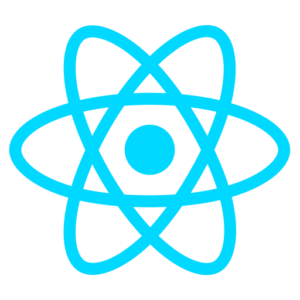
Why it’s a Good Choice: React is a powerful and versatile JavaScript library created by Facebook (now Meta). It utilizes a component-based architecture, allowing developers to build complex UIs by breaking them down into reusable components. This promotes code maintainability, scalability, and faster development cycles. React boasts a massive community and ecosystem of tools, making it a popular choice for large-scale applications.
Who Uses It: React is a favorite among tech giants like Netflix, Facebook, and Airbnb. Its flexibility and vast community resources make it a go-to option for building complex and interactive web applications.
2.Angular
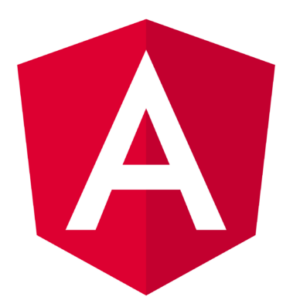
Why it’s a Good Choice: Developed by Google, Angular is a full-fledged front-end framework offering a structured approach to web development. It provides comprehensive tools and features for building single-page applications (SPAs). Angular enforces best practices through its built-in features like dependency injection and two-way data binding, leading to robust and maintainable code.
Who Uses It: Angular is popular among enterprises like Google, Forbes, and The Guardian. Its structured approach and emphasis on best practices make it ideal for large-scale, data-driven web applications.
3.Vue.js

Why it’s a Good Choice: Vue.js offers a sweet spot between the flexibility of React and the structure of Angular. It’s known for its lightweight core, ease of learning, and progressive nature. Vue allows developers to choose the features they need, making it ideal for smaller projects or those requiring a gradual adoption of a framework.
Who Uses It: Vue.js is gaining traction with companies like Alibaba, Xiaomi, and GitLab. Its ease of use and progressive nature make it a popular choice for startups and projects that require a balance between simplicity and power.
4.Svelte

Why it’s a Good Choice: Svelte is a relatively new but rapidly growing framework with a unique approach. Unlike React or Vue, which compile code at runtime, Svelte precompiles code during the build process, resulting in smaller bundle sizes and potentially faster performance. Svelte offers a clean syntax and a focus on developer experience.
Who Uses It: While Svelte is gaining momentum, its user base is still growing. Companies like The New York Times and Spotify are exploring its potential for performance-critical applications.
5.Python (Django)

What it is: Django is a high-level Python web framework that follows the Model-View-Template (MVT) architectural pattern, unlike Java. It provides a robust and secure foundation for building complex web applications. If you want to learn more about the differences between Python and Java, check out our article, Python vs Java, for a detailed comparison.
Why it’s a Good Choice: Django streamlines back-end development by offering pre-built features for common tasks like user authentication, database management, and URL routing. This allows developers to focus on core functionalities and business logic.
Who uses it: Django is a popular choice for large-scale web applications. Companies like Spotify, Instagram, and Pinterest leverage its features to build secure and scalable back-end systems.
6.JavaScript (jQuery)

What it is: While not technically a framework, jQuery is a widely used JavaScript library that simplifies DOM manipulation, event handling, and Ajax interactions. It provides a layer of abstraction over vanilla JavaScript, making writing efficient and cross-browser-compatible code easier.
Why it’s a Good Choice: jQuery simplifies common front-end development tasks, reducing development time and code complexity. Its large community and extensive plugin ecosystem offer additional functionalities for various needs.
Who uses it: jQuery remains a popular choice, especially for legacy codebases or projects that require a lightweight approach for animations or basic interactivity.
7.Go (GoLang)

What it is: Go (Golang) is a general-purpose programming language developed by Google. It’s known for its simplicity, speed, and concurrency features.
Why it’s a Good Choice: Go excels in building performant and scalable back-end systems. Its concurrency capabilities make it ideal for handling high-traffic web applications. Additionally, Go compiles to machine code, leading to efficient execution.
Who uses it: Go is gaining traction in the web development world. Due to its performance and scalability benefits, companies like Netflix, Dropbox, and Uber utilize Go for their back-end infrastructure.
8. HyperText Markup Language (HTML)
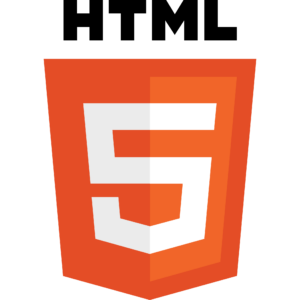
Why It’s a Good Choice:
HTML is basically the skeleton holding up the whole internet—it’s been around forever, and it’s not budging anytime soon. HTML is the go-to language for sketching out web pages, giving every site its shape and base. And since HTML5 rolled in, it’s leveled up big time—think fancy stuff like smarter tags, slick video and audio options, and even ways to keep things running offline. It’s like a toolbox for crafting those rich, click-around-and-explore websites we all love.
Who Uses It:
So, who’s using it? Pretty much every web developer out there, from the lone coder in their basement to the big dogs like Google, Amazon, and Microsoft. It’s so straightforward and everywhere that if you’re keen on web dev, you’ve got to know it.
9. Cascading Style Sheets (CSS)
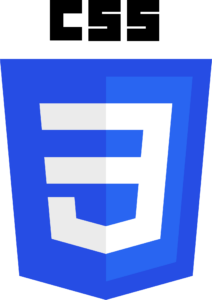
Why It’s a Good Choice:
CSS takes boring old HTML and turns it into something you actually want to look at—think gorgeous layouts and eye-catching designs. With CSS3 in the mix, you can whip up cool animations, make everything fit perfectly on any screen, and add those little wow moments, all without even touching JavaScript. Plus, with frameworks like Tailwind CSS and Bootstrap popping off, it’s easier than ever to slap together something polished fast. It’s like CSS got a turbo boost and handed everyone the keys.
Who Uses It:
And who’s all over it? Pretty much every front-end dev and designer out there. Big names like Airbnb, Spotify, and GitHub lean on CSS hard to build those smooth, easy-to-love interfaces that keep us hooked.
10. Swift

Why It’s a Good Choice:
Swift is famous for being the iOS champ, but it’s sneaking into the front-end scene with Swift for WebAssembly—and it’s turning heads. Imagine writing zippy web apps that work everywhere, all with Swift’s neat, tidy style. It’s fast, it’s safe, and it feels fresh, making it a sweet option for slapping together today’s web goodies.
Who Uses It:
So, who’s jumping on it? Apple’s all in, obviously, along with their whole crew of developers. But it’s not just them—big players like LinkedIn and Lyft are leveraging Swift, too, using it for both web and mobile development.
11. TypeScript
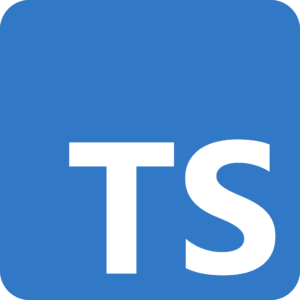
Why It’s a Good Choice:
Think of TypeScript as JavaScript’s cooler cousin—it’s got all the good stuff from JS but throws in static typing to keep things tight. That means you’re spotting screw-ups way before they mess you up, and your code stays nice and easy to handle. It’s blowing up lately, especially for big, beefy projects, because it plays so well with JavaScript and comes with some killer tools that devs can’t get enough of.
Who Uses It:
So, who’s riding the TypeScript train? Heavy hitters like Microsoft, Slack, and Asana are all about it, using it to crank out web apps that don’t buckle under pressure. And it’s not slowing down—word is, about 39% of devs are expressing interest in using it.
12. Elm

Why It’s a Good Choice:
Elm is this functional programming language that’s all about making web apps you can actually count on. No runtime errors—like, ever. It’s super strict with typing and keeps everything locked in place, so it’s perfect for those tricky front-end jobs that could otherwise turn into a mess. Plus, it’s straightforward and runs smoothly, which is why a great deal of developers are totally hooked on it.
Who Uses It:
Who’s using it? Places like NoRedInk and CircuitHub are all in, cranking out tough, glitch-free web apps with Elm. It’s got this tight-knit crew of fans who swear by it, and the word’s spreading—the community grows fast.
Why These Languages Matter in 2025
User Experience: You know how impatient people are online? Turns out 53% of users ditch a site if it takes more than 3 seconds to pop up. That’s why front-end languages are such a big deal—they’re your ticket to making things load fast and keep users happy.
Cross-Platform Development: Languages like Swift and TypeScript let you whip up apps that feel right at home no matter what gadget someone’s using—phone, tablet, whatever. It’s like one-and-done coding.
Future-Proofing: Keeping up with languages like Elm and TypeScript is how you stay ready for whatever’s coming next in web dev.
Wrapping Up
The front end is a dynamic and ever-evolving space. By equipping yourself with the foundational languages for web development and exploring the potential of frameworks and libraries, you’ll be well on your way to crafting exceptional user experiences. Remember, the “best” tools depend on your project’s needs and your team’s preferences.
At LITSLINK, we’re passionate about building the future of web experiences. We’d love to hear from you if you’re looking for a front-end development partner who can transform your vision into a reality.
Let’s chat! Contact us today for a free consultation and see how LITSLINK can propel your web project to the next level.





